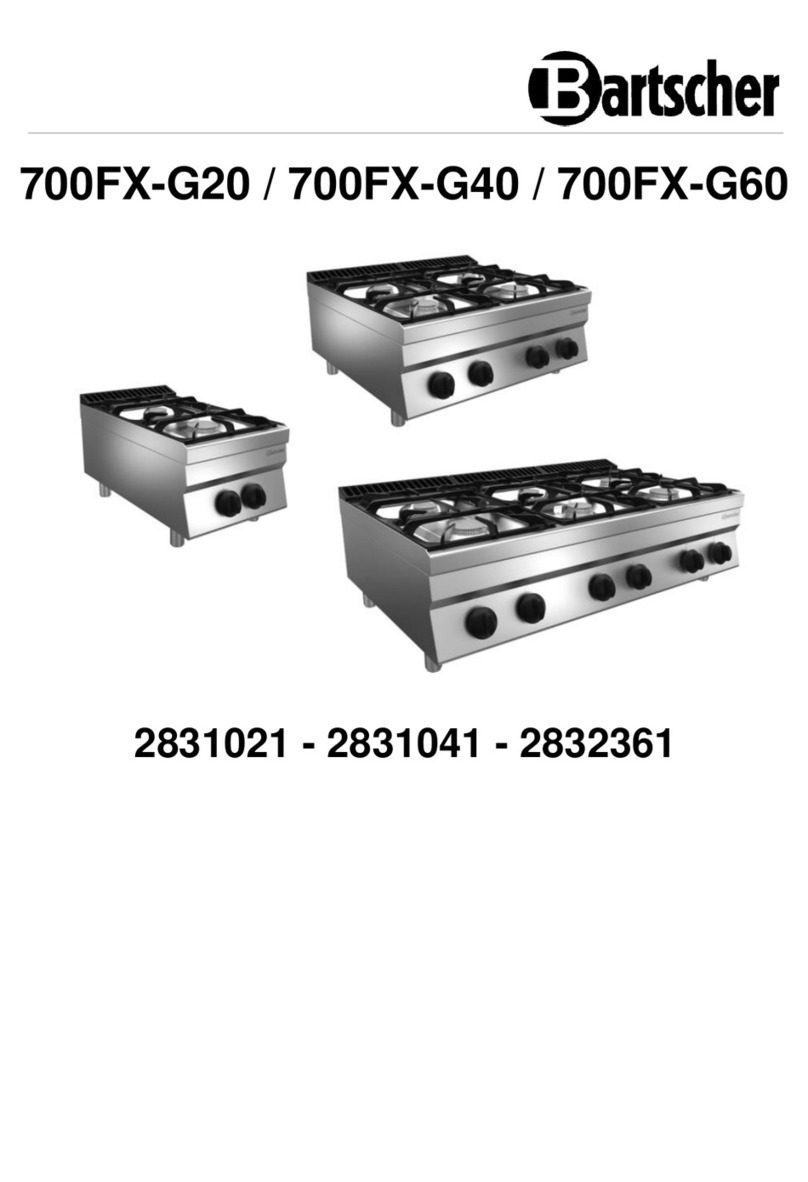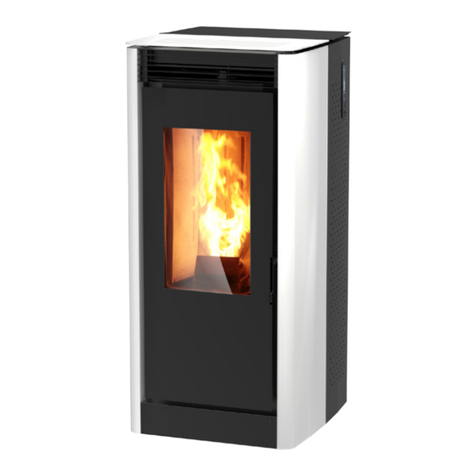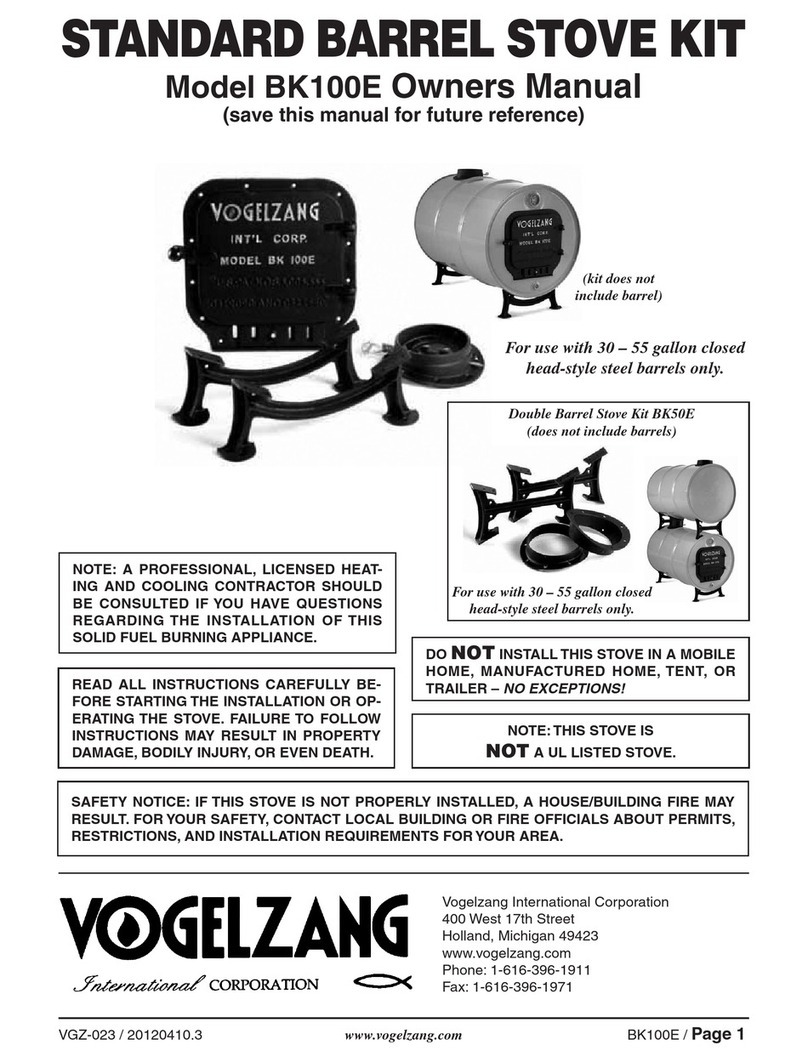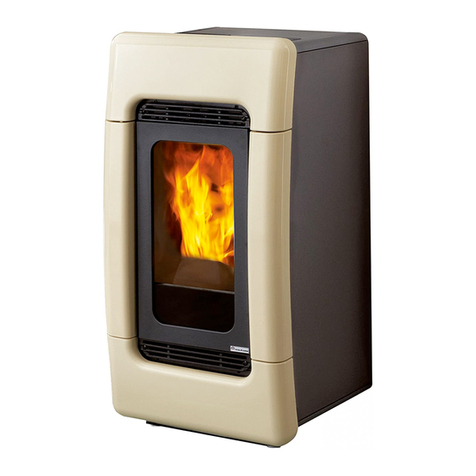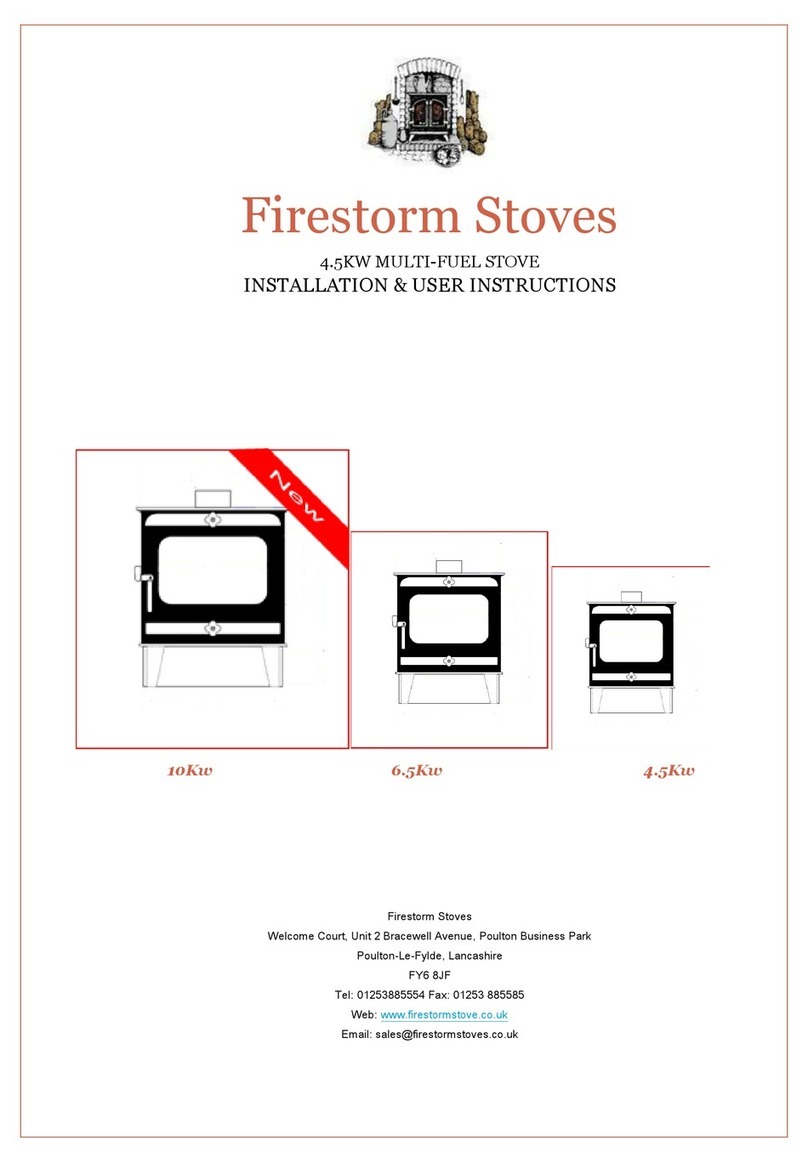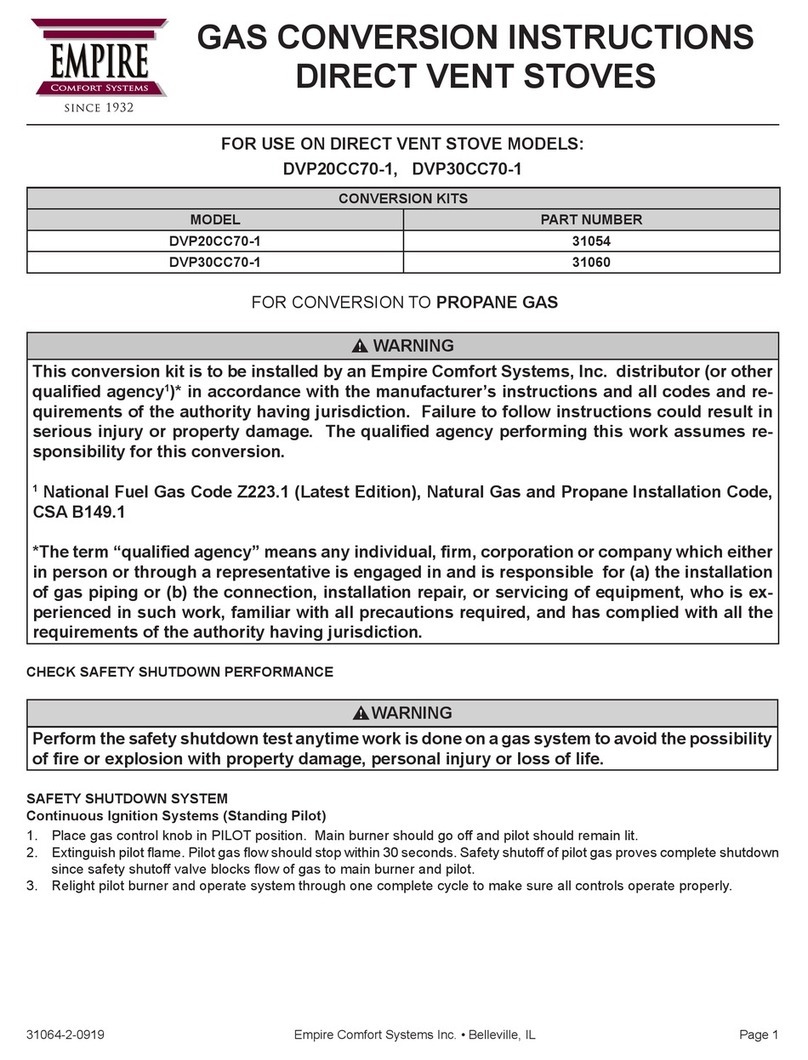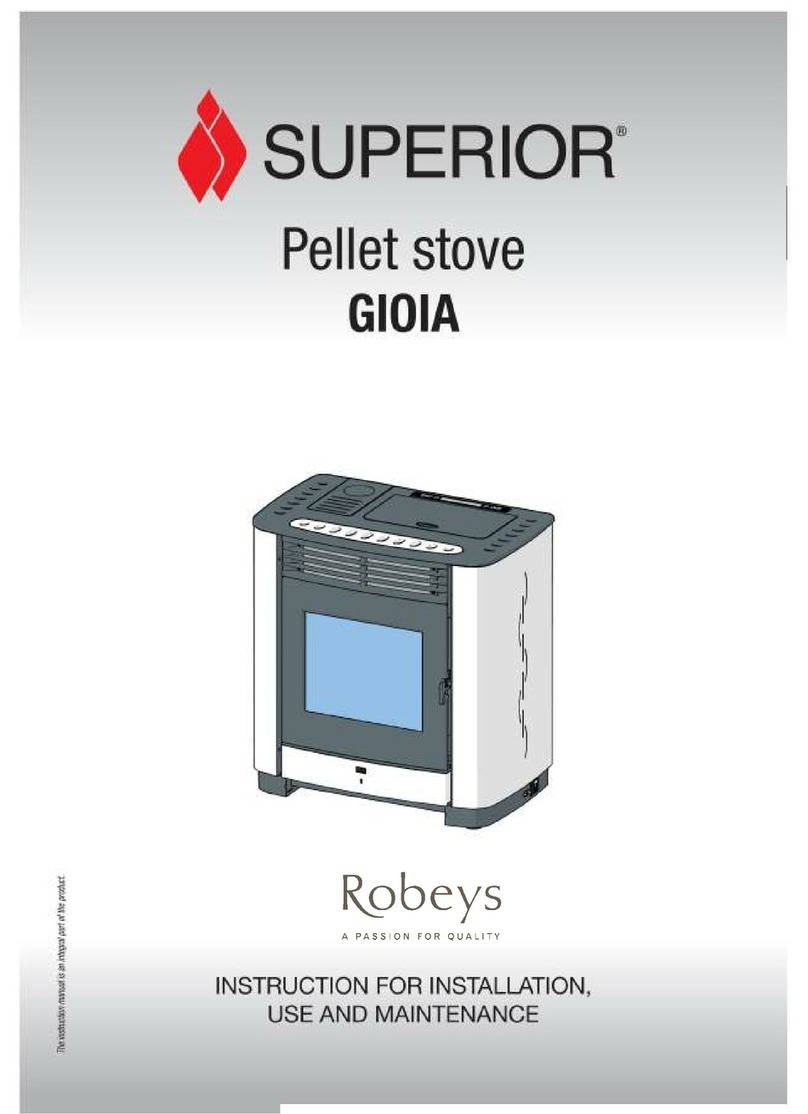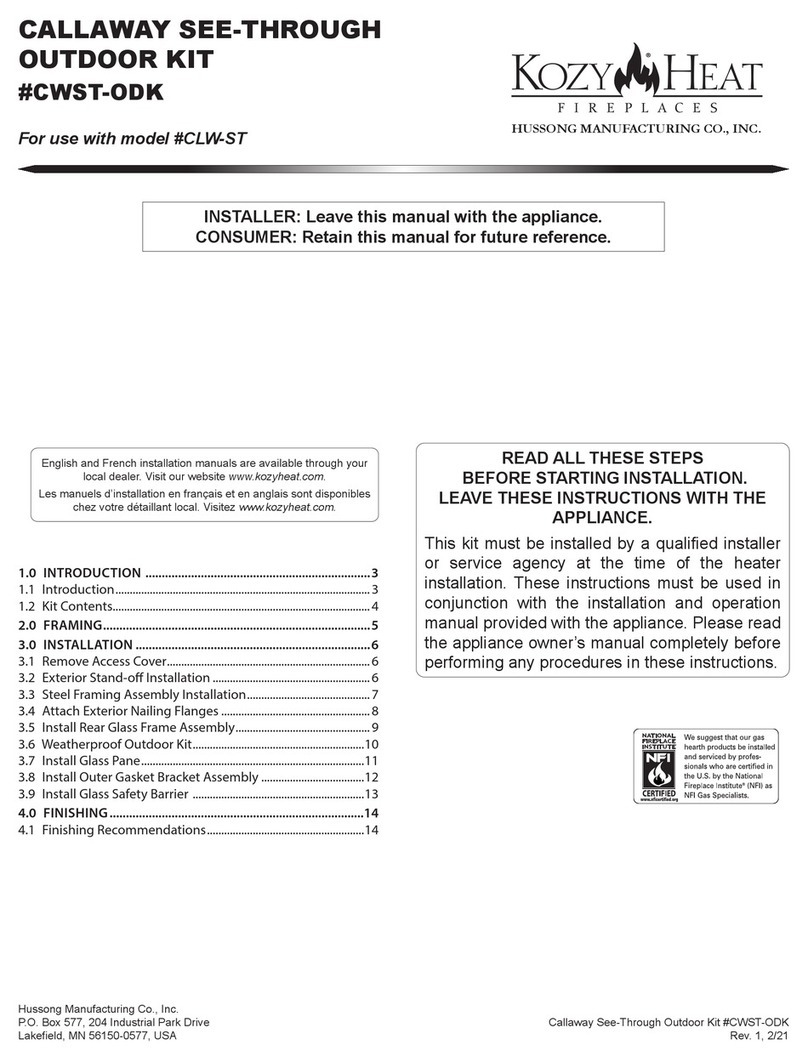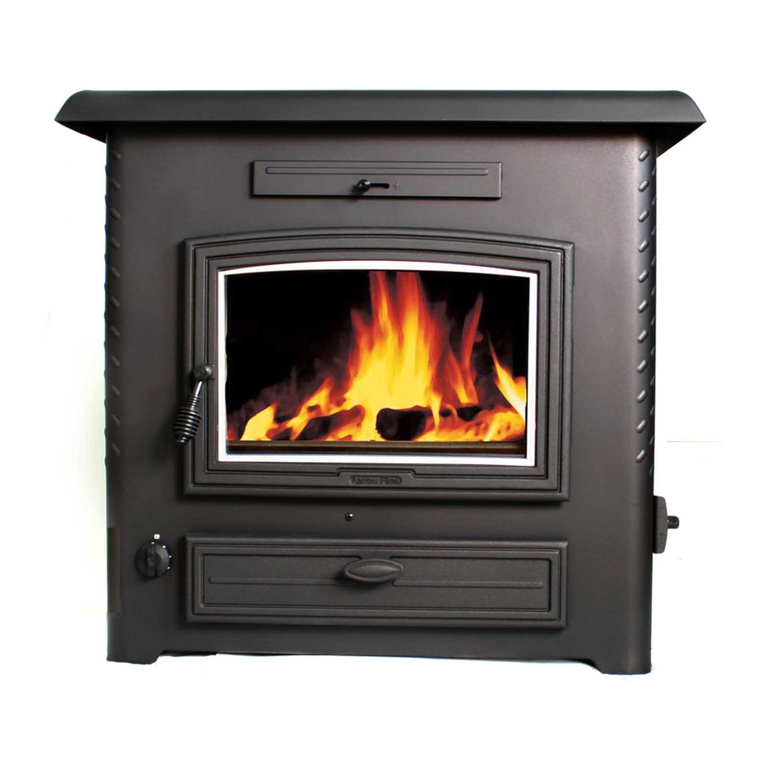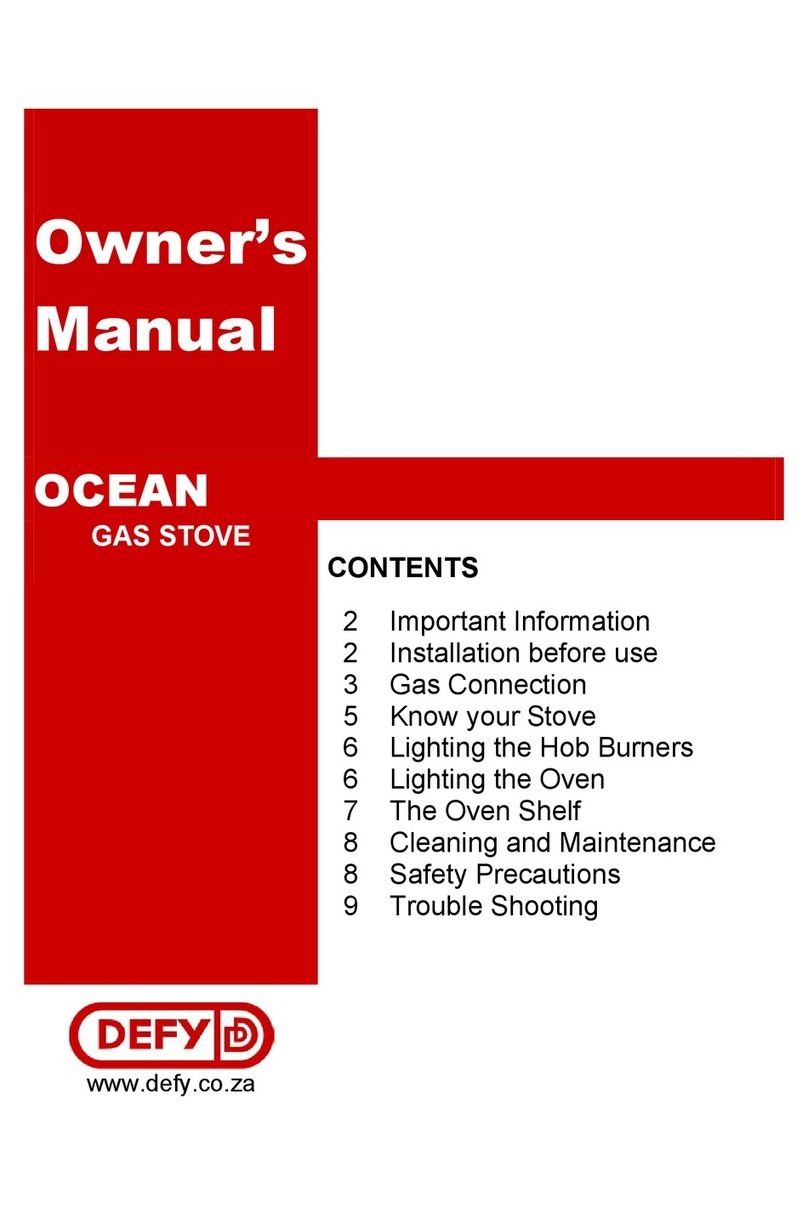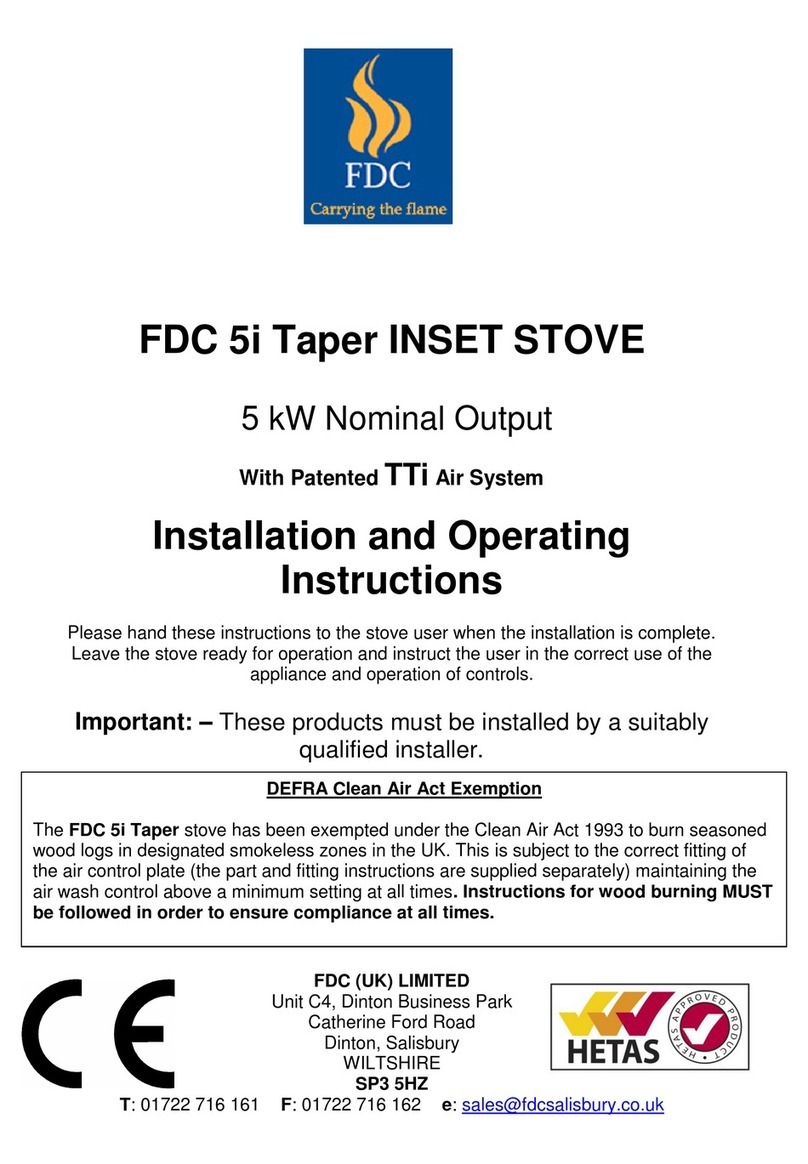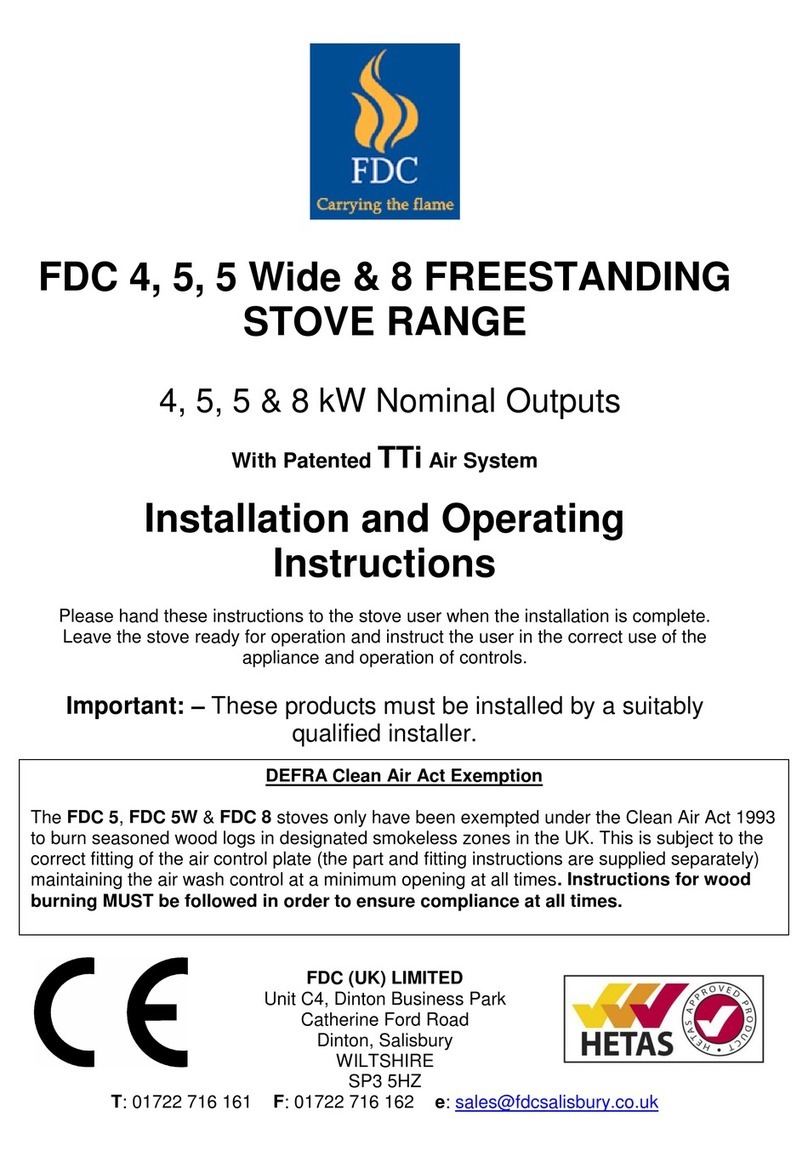
13 FDC Freestanding Issue 5 05/15
liner top. Whilst approval test cycles are 2 hours, a stove burning Ancit or equivalent fuel
may be kept in over night easily.
When burning wood, the fire will die down as the fuel is consumed. When the flames
disappear and the remainder is breaking down into glowing embers it is an appropriate
time to consider re-fuelling. NOTE: If the flames disappear and there are still lumps of
solid wood left this indicates excessive internal moisture in the wood or insufficient air
supply or flue draught.
NOTE: To eliminate unwanted smoke emission, after loading new logs on to the fire,
open the air wash control up fully for 3-5 minutes or until the logs are blackened all over
to boost the fire and get flames issuing from the top of the fuel as soon as possible.
When flames are well established, reduce the air wash to the running setting required.
Burning without flames above the fuel will create unnecessary smoke. Do not load
fuel above the tertiary air inlet holes at the back of the firebox.
Loading 2 to 4 large/medium sized logs will produce a good output with reasonable burn
time, generally small logs will burn up quicker producing a high output for a short time
and a large log will take longer to burn and produce less output over a given time. These
appliances are approved for intermittent operation on wood (0.75 to 1.5 hour burn
cycles) although much longer burn times can be achieved by fully loading the firebox,
getting the fuel burning well and then shutting the air controls right down (see below).
The fire will then need reviving by first opening the air controls and then using small
pieces of wood and plenty of air to get flames issuing from the wood again. The glass
will likely black up due to the air wash being closed down fully.
6.9 Shutting Down
The stove will normally shut down by itself as the fuel is consumed. In order to shut
down the stove for other reasons, close the primary air controls (if open), then close the
secondary air control. If the controls are left in this position, the fire will eventually go
out. If you want to revive the fire it is recommended that the primary air controls are
open first, and then open the secondary air controls.
Warning! - The stove will remain very hot for a considerable time after the fire has died
down or been extinguished.
Notes: Warning!- Petroleum coke fuels or household waste must not be burnt on
this appliance. Should any difficulties arise over fuel quality or suitability, consult your
local approved fuel merchant.
6.10 Shut down for prolonged periods
If the stove is to be left unused for a long period of time then it should be given a
thorough clean to remove ash and unburned fuel residues. To enable a good flow of air
through the appliance to reduce condensation and subsequent damage, leave the air
controls fully open. It is important that the flue connection, any appliance baffles or
throat plates and the chimney are swept prior to lighting up after a prolonged shutdown
period.
6.11 Maintenance
Inspect the inside of the firebox and above the baffle plate every week during use.
Where the chimney is believed to have previously served an open fire installation, it is
possible that the higher flue gas temperature from the stove may loosen deposits that
were previously firmly adhered, with the consequent risk of flue blockage. It is therefore
recommended that the chimney be swept a second time within a month of regular use
after installation. See chimney cleaning section in section 3.1 Warnings and
Important Information. Inspect the inside of the stove and the flue ways and ensure




















